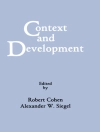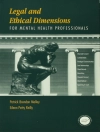Social Stories™ are a widely used and highly effective intervention for supporting children on the autism spectrum, but it can feel overwhelming to follow all the rules put in place to create personalised stories. Developed with the input of parents and professionals, and informed by new Social Stories research, this is a comprehensive, clear, easy step-by-step guide to writing effective personalised Social Stories™ that give children social information, creating many benefits for them.
The book includes many examples of real Social Stories created for children by parents and teachers working together, and handy downloadable checklists that highlight the essential components of a Social Story, helping to ensure that each story you write achieves the best possible results.
İçerik tablosu
Prologue: A Parent’s View. Introduction. Part 1. Understanding Autism. 1.1. Mindblindness. 1.2. Getting the Gist. 1.3. Language and Communication. 1.4. Imagination, Memory, Time Perception, Planning. 1.5. Sensory, Interests, Preoccupations, and Compulsions. 1.5. Strengths and Skills. Part 2. What is a Social Story™? 2.1 What Makes a Social Story™ Different? 2.2. When Should I Write a Social Story™? 2.3. What are they for? 2.4. What is Different about Children with ASD? Why are Social Stories™ Important for them? 2.5. What are the Benefits of Social Stories™? Part 3. A Guide to Social Stories™. 3.1. A Summary of How to Write a Social Story™. 3.2. Step I: The Goal and Gathering Information. 3.3. Step II: Writing the Social Story™. 3.4. Step III: Implementing the Social Story™. Part 4. Gathering Information. 4.1. Worked Example Using the Template (George). 4.2. Worked Example Using the Template (Matthew). 4.3. Why is it Important to Try and Tackle Things Early Rather than Leave Them? 4.4. When Not to Use Social Stories™. Part 5. Examples of Social Stories. 5.1. Why We Go to School. 5.2. Working on my Own. 5.3. Focussing and Concentrating. 5.4. Trying Hard at Swimming. 5.5. Joining School Swimming Lessons. 5.6. What is Respect? 5.7. Happy Playtimes. 5.8. Taking New Medicine. 5.9. Finding out about Archbishop Holgate’s 6th Form. 5.10. Visiting the Dentist. 5.11. Why We Do Homework. 5.12. How to Take Tests. 5.13. Waiting to Ask the Teacher a Question. 5.14. Going to Flamingo Land. 5.15. I am a Kind, Intelligent Person. 5.16. Spiderman is a Film Character. 5.16. Using Words that People Like. Part 6. A Template for Making Sense of a Child’s Behaviour and Planning Ways to Help. 7. Step-by-Step Flowchart. 8. Checklist.
Yazar hakkında
Chris Williams is a Clinical Psychologist and Barry Wright is a Consultant Child and Adolescent Psychiatrist. They have both worked for the NHS with children with ASDs and their families for over 20 years. They are the authors of How to Live with Autism and Asperger Syndrome: Practical Strategies for Parents and Professionals and Intervention and Support for Parents and Carers of Children and Young People on the Autism Spectrum: A Resource for Trainers, both published by JKP. They both live in North Yorkshire, UK.












